The gooseberry has many advantages: it is unpretentious, high-yielding, has an excellent taste and keeping quality of berries. Tsar's jam, the taste of which has conquered many, including Catherine the Great and Alexander Sergeevich Pushkin, is made from gooseberries. For the healthy growth and development of northern grapes (as this berry shrub is often called), proper care is needed, which, without fail, includes regular and properly organized feeding.
Content
The value of feeding when growing gooseberries
In order for the gooseberry to bear fruit abundantly and efficiently for a long time - the berries do not shrink, be juicy, aromatic and tasty - the shrub must receive a full-fledged balanced diet. It will help the bush to be healthy, lay new fruit buds, and give a full harvest.
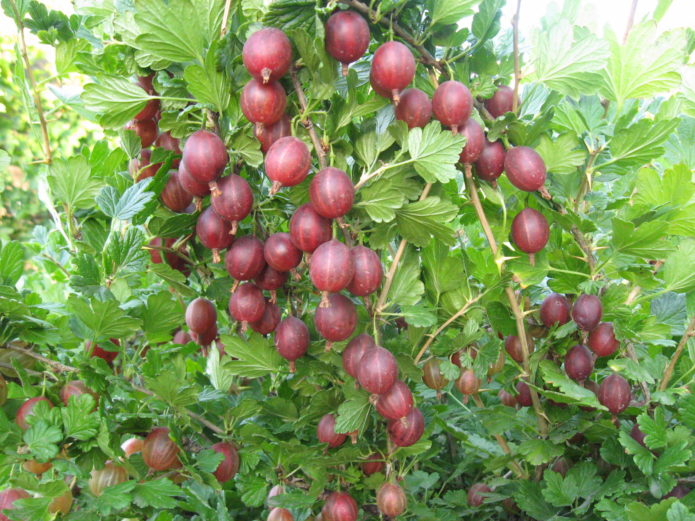
With proper care and favorable conditions, you can pick 10-20 kilograms of berries annually from one gooseberry bush
Since a shrub can grow in one place for a long time, bear fruit abundantly, the supply of necessary elements in the soil is quickly depleted. As a result, growth processes slow down, disease resistance, frost resistance decrease, foliage and ovaries begin to fall off the culture. An overabundance of macro- and microelements in the soil can also lead to negative consequences. That is why it is necessary to know and strictly follow the rules of gooseberry fertilization.
Required fertilizers and their application
The normal growth and fruiting of a crop is influenced by the content in the soil of substances such as nitrogen, phosphorus and potassium.
Nitrogen fertilizers
Nitrogen is important for a plant, since it is primarily a part of proteins, forms the growth of gooseberries, and plays an important role in photosynthesis.
Important! Nitrogen more than other elements affects the quality and abundance of the crop.
With a lack of this element, the culture experiences a kind of oxygen starvation: growth slows down, the number of young shoots decreases, the green color of the foliage is lost, the berries ripen unevenly, and begin to crumble. Signs of nitrogen starvation appear in the following conditions:
- the soil is highly acidic;
- an excess of organic matter leads to the fact that nitrogen passes into forms that are difficult for plants to assimilate;
- with an abundance of weeds, which actively absorb nitrogen and deplete its reserves in the soil.

The reason for the yellowing of gooseberry leaves must first of all be sought in nitrogen deficiency in this crop.
An excess of this substance is manifested in a large amount of green mass. It can negatively affect the frost resistance of the plant and lead to freezing of young growth in winter. Soil saturation with nitrogen occurs due to the following factors:
- the activity of soil microorganisms;
- introduction of organic matter;
- mineral dressings.
Varieties of nitrogen fertilizers
The main nitrogen fertilizers are:
- ammonium sulfate. Fertilization affects the amount and development of the aerial part of the plant, the viability of the bush and the abundance of the crop. Ammonium sulfate granules are fast dissolving, easily absorbed by plants and are not subject to washing out by precipitation. The main disadvantage of this fertilizer is its ability to quickly acidify the soil;
- ammonium nitrate strengthens plant immunity and heals the soil. Saltpeter is a substance that is rapidly dissolving and easily assimilated by plants, but at an increased concentration, its solution can cause burns;
- urea also helps to strengthen immunity and improve soil health. In addition, fertilization helps fight pests and increases yields. It is brought in during spring digging and used for foliar dressing. Urea is an easily soluble fertilizer, is well absorbed by crops, minimally acidifies the soil, does not cause burns and poisoning.
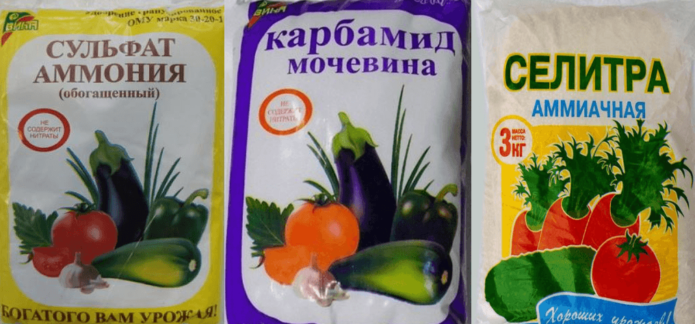
Nitrogen fertilizers are nitrogen-containing compounds, the main purpose of which is to increase the level of nitrogen content, and, as a result, to increase yields.
Table: application of nitrogen fertilizers - rates and dates
| Nitrogen fertilizers | amount | Timing |
| Ammonium sulfate | 1.5 tbsp. spoons per 1 sq. meter or |
|
| 1 tbsp. spoon in a bucket of water (for liquid feeding) | ||
| Ammonium nitrate | 0.5 tbsp. spoons per 1 sq. meter | When preparing the landing pit |
| 1 tbsp. spoon for 1 sq. meter | Emergence of leaves | |
| Carbamide (urea) | 0.5 tbsp. spoons per 1 sq. meter | When preparing the landing pit |
| 1 tbsp. spoon on a bucket of water | Foliar dressing:
|
Phosphate fertilizers
Phosphorus actively affects many vital processes of berry culture: respiration, moisture consumption, yield, fruit quality. The element deficiency is signaled by dark green or purple spots on gooseberry leaves, a decrease in the number of ovaries, undersized shrubs, delayed flowering and ripening of berries. Excessive application of phosphorus-containing fertilizers does not harm the plantings, since phosphorus is absorbed only in the required amount, and we do not pray more.
Note! It is very important to provide a sufficient amount of this substance for young plants, since the effects of phosphorus starvation cannot be corrected even with sufficient phosphorus fertilization in the future.
Types of phosphorus fertilizers
The main source of phosphorus for gooseberries is organics, as well as the following mineral fertilizers:
- simple superphosphate. It is especially necessary for shrubs during fruiting. Has a significant effect on the taste and aroma of berries;
- double superphosphate. necessary for the gooseberry root system;
- phosphate rock. recommended for introduction into soils with high acidity.

Phosphorus mineral fertilizers are recommended to be applied in the fall, since in many of them the main element is contained in a difficult-to-digest form and will be able to fully nourish the plant only next year.
Table: application of phosphorus fertilizers - rates and dates
| Phosphate fertilizers | amount | Timing |
| Simple superphosphate | 2-3 tbsp. spoons under one bush |
|
| Double superphosphate | 2-2.5 st. spoons under one bush |
|
| Phosphorite flour | 2.5-3 tbsp. spoons under one bush | At the beginning of the growing season and after harvest |
Note! It is recommended to apply phosphorite flour together with nitrogen-containing fertilizers or organic matter. In this case, the gooseberry assimilates it better and faster.
Potash fertilizers
Gooseberries need potassium for intensive photosynthesis, active metabolism. It affects the sugar content of fruits, promotes rich flowering, increases the keeping quality of berries, increases the frost resistance of the shrub and its resistance to diseases.
With a lack of an element, young shoots develop poorly, the stems give few lateral processes. Leaves curl, dead areas appear on them, edges die off. The berries become smaller, the yield is significantly reduced. An overabundance of potassium is indicated by falling ovaries, leaves and gooseberry berries.
Types of potash fertilizers
The main source of potassium for gooseberries is mineral fertilizers. These include:
- potassium sulfate (potassium sulfate) provides the shrub with a comfortable wintering, significantly increases its frost resistance;
- potassium chloride (potassium chloride). Due to the availability and speed of migration in the soil, it is the most demanded potash fertilizer. It is used as the main top dressing for shrubs during the entire growing season;
- potassium salt. The fertilizer gives the greatest effect when applied during autumn or spring digging.
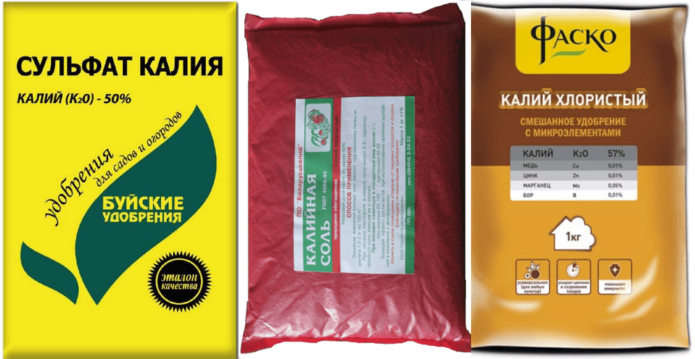
Potash fertilizers are highly acidic, so they are often used together with calcium-containing fertilizers or lime
Table: potash fertilization - rates and terms
| Potash fertilizers | amount | Timing |
| Potassium sulfate | 1 tbsp. spoon for 1 sq. m | When digging in autumn |
| Potassium chloride | 1 tbsp. spoon for 1 sq. m |
|
| Potassium salt | 1 tbsp. spoon for 1 sq. m | During autumn and spring digging |
Note! Potassium supplements are not recommended during budding and during budding.
Complex fertilizers for gooseberries
All of the above fertilizers are simple, that is, they contain one nutritional element. Many gardeners prefer to use compound fertilizers containing two or three simple forms. In the trade, the following complex forms are most often presented, which are perfect for fertilizing gooseberries:
- Nitroammofosk. This is a balanced triple fat, which contains nitrogen, potassium and phosphorus in equal proportions (17% each). It is recommended to apply Nitroammofosku in the fall at the rate of 100 g per gooseberry bush, as well as in the spring and summer period in the form of liquid dressings: 50-60 g per 1 sq. M;
- Nitrophoska. It is a triple fat with equal parts (11% each) of nitrogen, phosphorus and potassium content. Nitrofoska is used as the main autumn-spring dressing (70–80 g per 1 square meter), since it acts rather slowly on plants. Phosphorus granules do not dissolve in water and precipitate;
- Ammophos. It is a double fat, consisting of 12% nitrogen and 40-50% phosphorus. It is used for autumn application. On poor soils, it can be used as top dressing. Consumption rate - 20-30 g per 1 sq. meter;
- Nitrophos (Nitrophosphate) contains 23% nitrogen and 17% phosphorus. It can be recommended for both autumn use and summer feeding.
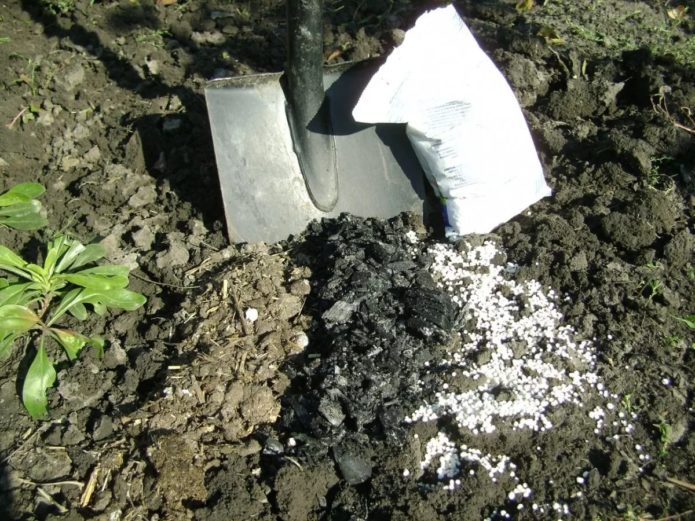
Complex fertilizers are widely used in a variety of climatic conditions on all types of soils, both for pre-sowing application and as top dressing at all stages of the gooseberry vegetation
Fertilizing gooseberries with organic matter
Gooseberries respond well to organic feeding. It nourishes the plant, strengthens its immunity to diseases and pests. Under the gooseberry, you can make:
- slurry;
- bird droppings;
- mullein;
- compost.
It is preferable to introduce organic fertilizers in the form of liquid infusions at the rate of 10 liters per bush. It is important to observe the necessary proportions when preparing infusions.
Table: proportions of organic breeding for the preparation of gooseberry infusions
| Fertilizer | Proportion |
| Slurry | 1:10 |
| Compost | 1:4 |
| Mullein | 1:6 |
| Bird droppings | 1:13 |

When making organic infusions, be careful not to get them on the trunk of the bush - this can lead to burns
Folk remedies for feeding gooseberries
Effective for gooseberries are natural dressings that have been used by gardeners for centuries. They contain organic substances that have a beneficial effect on the growth, development and fruiting of the shrub. Here are some time-tested recipes:
- Green infusions. They can be prepared from a mixture of plants - chamomile, tansy, nettle - with the addition of ash and onion peel: 5 kg of chopped grass, a glass of ash and the same amount of onion peel are poured with a bucket of water and left for a week to ferment. The resulting concentrated infusion is diluted with water (1:10) and used for root feeding or spraying of shrubs.
- Eggshell. The dried shell is ground into powder, mixed with soil, watered. It reduces the acidity of the soil, making it looser. 50 g of the prepared powder is added under one bush.
- Yeast feeding. To make it, 1 kg of yeast is diluted with 5 liters of warm water, let it brew for several hours, diluted with water in a ratio of 1:10 and water the gooseberry bushes. The main disadvantage of this top dressing is that the yeast infusion absorbs a large amount of potassium from the soil. Therefore, feeding with yeast must be accompanied by adding wood ash.
- Potato peelings (1 liter) are poured with a bucket of boiling water. The container is wrapped so that the liquid cools slowly, a glass of ash is added. A still warm infusion is poured under the gooseberry bush.
Fertilization system for gooseberry
Gooseberries meet a generous and high-quality harvest for those gardeners who, when feeding crops, follow a certain system, apply fertilizers in a timely manner and in the right amount.
Fertilizing when planting gooseberries
Planting and transplanting are always stressful situations for the plant. It is very important to put the required amount of nutrients into the planting hole, thanks to which the plant will safely endure the planting process, quickly take root and begin to gain strength. When preparing the planting pit, it is necessary to add to the soil mixture for backfill:
- compost bucket (rotted manure, foliage);
- a glass of wood ash;
- 2 tbsp. spoons of double superphosphate;
- nitrogen fertilizers (according to the table above).
Instead of ash and simple mineral fertilizers, you can use a complex triple fat. Mineral fertilizers must be mixed with the soil in order to exclude burns that may occur during direct contact of the root system with fertilizers.
Important! Acidic and podzolic soils with high acidity must be calcified: add dolomite flour (200–300 g per sq. M) or lime (400–500 g per sq. M).
If a well-filled soil mixture is added to the planting hole, and the land on the site is not poor, well fertilized, then in the first year of the shrub's life, you can limit yourself to mulching the soil around its base with compost or humus. On poor soils, it is recommended to carry out several top dressing with folk remedies and organic matter:
| Time spending | Type and composition of feeding | |
| 1 feeding | Early April | Infusion of potato peels and ash |
| 2 feeding | May | Root and foliar feeding with green infusion |
| 3 feeding | June | Root dressing with green infusion |
| 4 top dressing | August | Vermicompost (biohumus): infuse 1 glass for 24 hours in a bucket of warm water |
| 5 top dressing | September | Organic bucket under the bush |
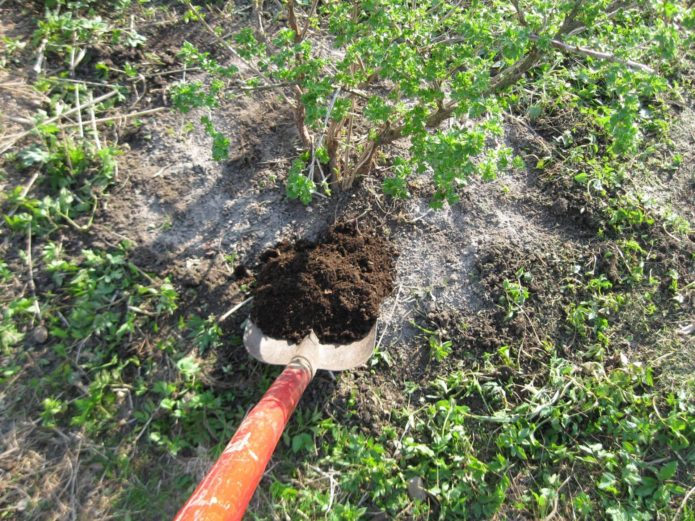
The place of feeding is determined depending on the placement of the mass of roots: in an adult plant, this is a site at a distance of about 1-1.5 m from the base of the bush
Foliar dressing of gooseberries
The fastest way to make up for the lack of nutrients is to carry out foliar feeding with the following compositions:
- 2% solution of any phosphorus or potash fertilizers;
- 0.05% boric acid solution;
- 0.5% manganese sulfate solution;
- urea.
Note! Spraying with a highly concentrated solution of nitrogen fertilizers can cause leaf burns.
The most favorable time for foliar dressing is cloudy weather or evening.
Top dressing of gooseberries during flowering and fruiting
In the next 2-3 years of life in early spring, even before the buds open, nitrogen fertilizers must be applied under the gooseberry bushes according to the above norms. Fertilizers can be applied in 2 ways:
- dry, that is, scatter the granules at a distance of half a meter from the base of the plant and seal them to a depth of about 30 cm;
- liquid. It involves the cultivation of minerals in water and the irrigation of fertilizer ditches dug around the gooseberry bushes at a distance of about 1 m.
Fruiting bushes need more phosphorus and potassium than young ones. Therefore, in early spring, when the first leaves appear, feed with Nitrofoskaya. During the beginning of flowering, for additional potassium and trace elements, you can scatter about one glass of ash in the near-stem circle of each bush.
After the end of flowering, when the gooseberry begins to form berries, it is recommended to feed with a solution of organic fertilizers.
Important! Such dressings are required on light sandy soils or for certain indications: yellowing of gooseberry leaf plates, falling of the lower leaves on the branches.
The best way to apply the solution is into furrows about 10 cm deep, dug at the base of the trunk circle. Summer application of potassium-phosphorus fertilizers contributes to the development of the plant's root system, the growth of new shoots, the rapid ripening of the crop, as well as the establishment of ovaries for the next year.
Fertilizing gooseberries in autumn
In autumn, the soil near the gooseberry bush must be enriched with organic matter and mineral fertilizers (phosphorus and potash).
It is preferable to apply mineral fertilizers in the form of granules, burying them 30–40 cm into the soil around the trunk circle, but not at the base of the bush, since the gooseberry root system is located close to the ground surface and can be damaged during deep digging. It is recommended to do this in early September, since fertilization provokes the growth of young shoots.
Important! With a later fertilization, the bush will not have time to prepare for winter and the young growth may die.
After the autumn digging, the trunk circle is recommended to be mulched.
Video: caring for gooseberries in the fall, including feeding shrubs
Gooseberries, unlike most berry crops, can grow and bear fruit in one place for more than a dozen years. If the planting site is chosen correctly, the young bush was helped to grow stronger and form, it receives the necessary nutrients on time, then the gooseberry will certainly thank its owners with large, fragrant and sweet berries, which are not easy tasty, but also extremely useful for health.
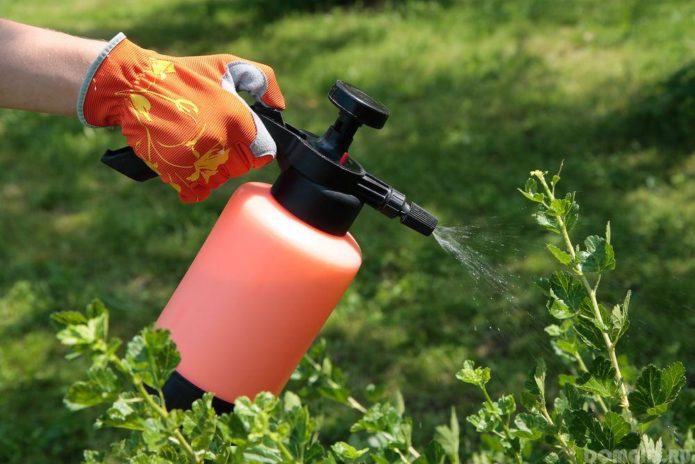
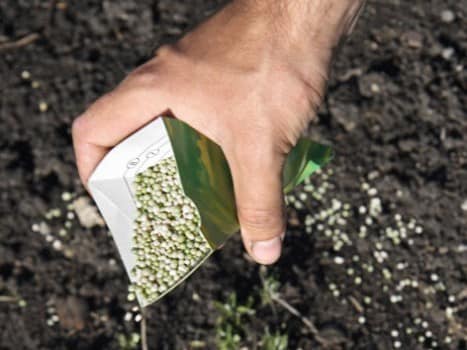
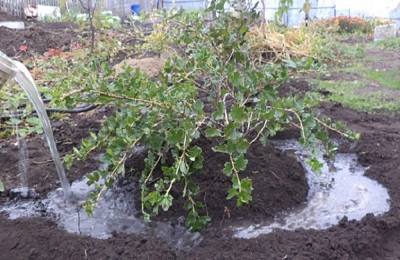
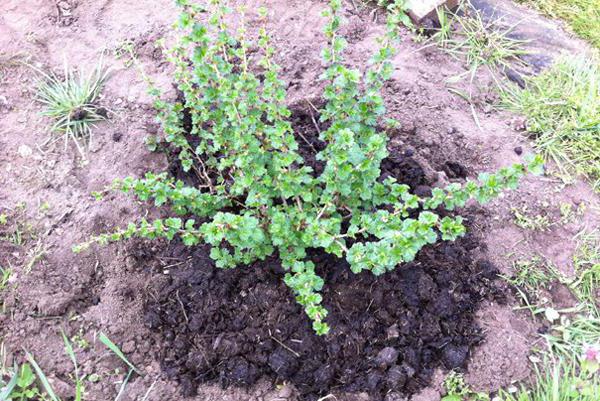
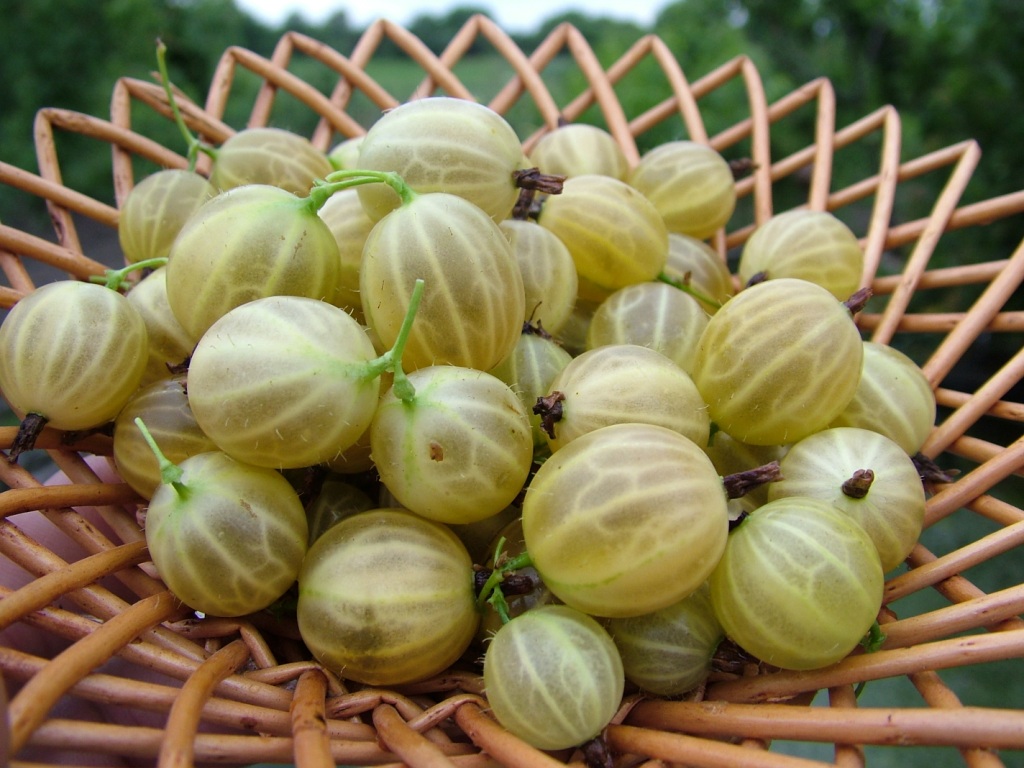

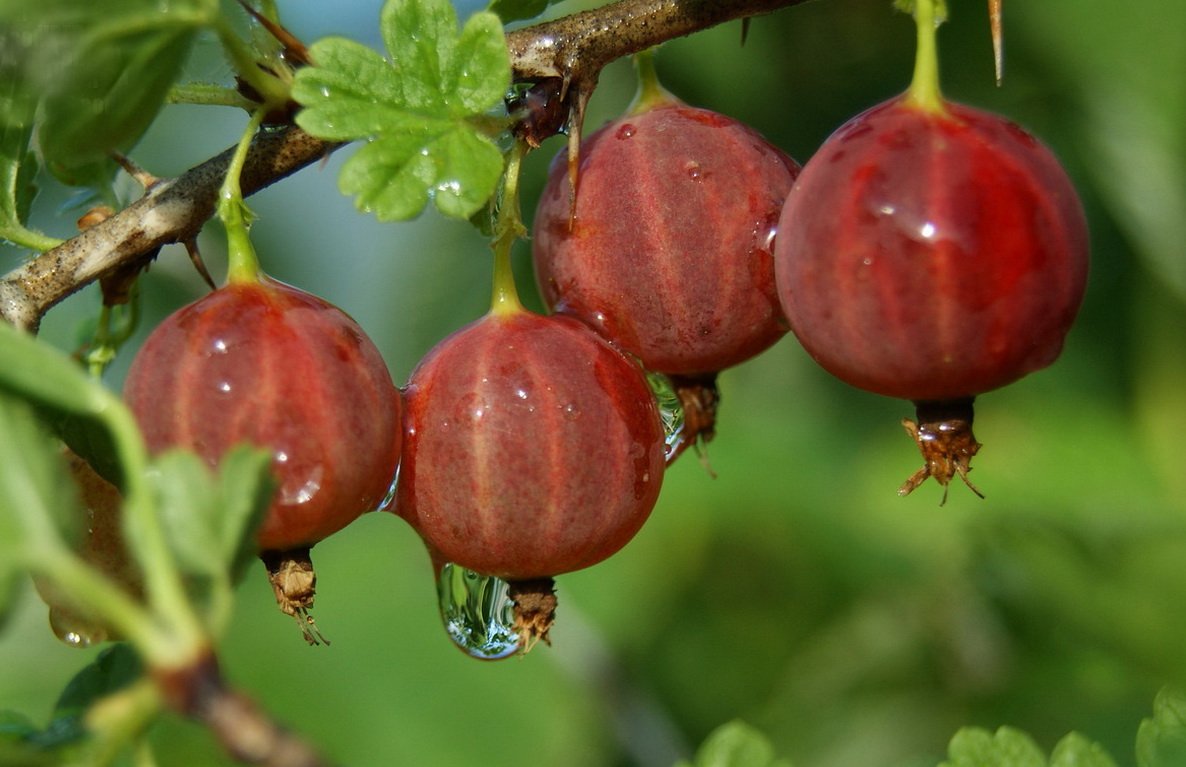
1 comment